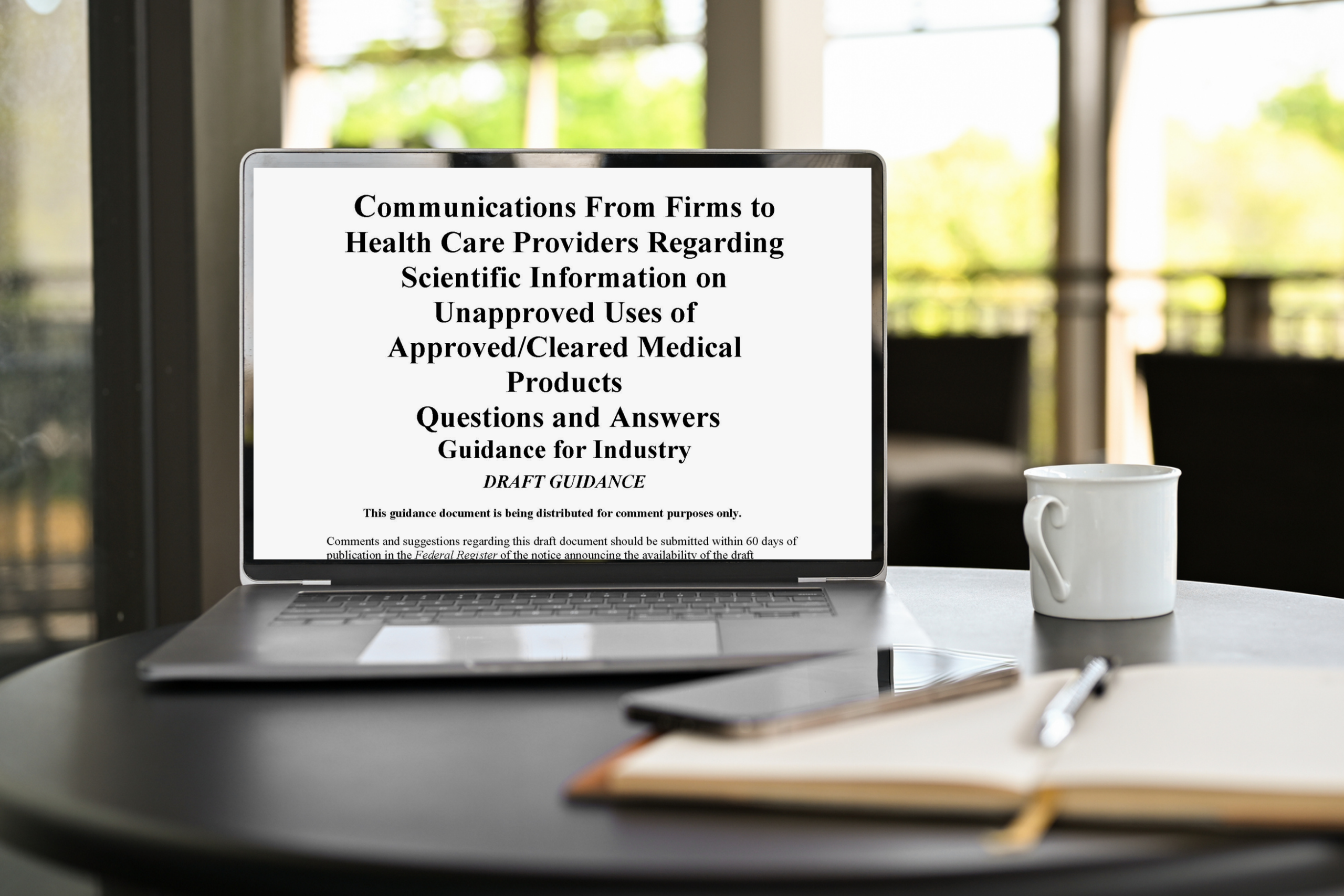Yesterday, the FDA issued a draft guidance titled “Communications From Firms to Health Care Providers Regarding Scientific Information on Unapproved Uses of Approved/Cleared Medical Products: Questions and Answers” (here). If you can get that out of your mouth without taking a breath, I think you must be a free diver.
The issue of disseminating information regarding off-label uses in scientific publications, books etc. has been a long talked about, written about, and questioned option for companies and scientists for as long as I can remember. The FDA clearly does not want a firm to promote off-label uses because that disrupts the review and approval process necessary for providing oversight of industry and ensuring that any new uses undergo rigorous review by the Agency. However, the Agency also recognizes the value of the dissemination of certain high-quality data and other information that will be described further below.
The FDA says, “This revised draft guidance, when finalized, will provide FDA’s current thinking on common questions regarding certain communications by firms to health care providers (HCPs) of scientific information on unapproved use(s) (SIUU) of approved/cleared medical products. Specifically, this guidance relates to firms sharing the following types of communications with HCPs:
- Published scientific or medical journal articles (reprints)
- Published clinical reference resources, as follows:
- Clinical practice guidelines (CPGs)
- Scientific or medical reference texts (reference texts)
- Materials from independent clinical practice resources
- Firm-generated presentations of scientific information from an accompanying published reprint”
The newly revised draft guidance applies to products approved or cleared by CDER, CBER, CDRH, and CVM; it supersedes the 2014 revised draft guidance Distributing Scientific and Medical Publications on Unapproved New Uses – Recommended Practices and is presented in a Q&A format. It provides a comprehensive definition of the terms used in the document as related to the scope of the new draft.
There is also a background section that describes the evolution of the approvals of drug products and their uses as well as how healthcare providers may use a drug for off-label uses if they believe it will benefit their patients. The guidance further describes the value of communications that are “truthful, non-misleading, factual, and unbiased and include all information necessary for HCPs to interpret the strengths and weaknesses and validity and utility of the information about the unapproved use. It is also critical that such communications be based on studies and analyses that are scientifically sound and provide clinically relevant information.”
While the guidance lists only the following four questions, the answers are very comprehensive and provide detail that has been reflected in previous drafts while also providing current Agency thinking on this issue.
- What should firms consider when determining whether a source publication is appropriate to serve as the basis for an SIUU communication?
- What information should firms include as part of SIUU communications?
- What presentational considerations should firms take into account for SIUU communications?
- What additional recommendations apply to specific types of SIUU communications?
The fact that this is a draft, and the 2014 guidance was also a draft, suggests that the Agency recognizes the evolution of this issue as well as some of the surrounding controversy that it engenders, and, in my opinion, may be worried to some extent that making the draft final might have potential to raise First Amendment rights and generate subsequent litigation.




